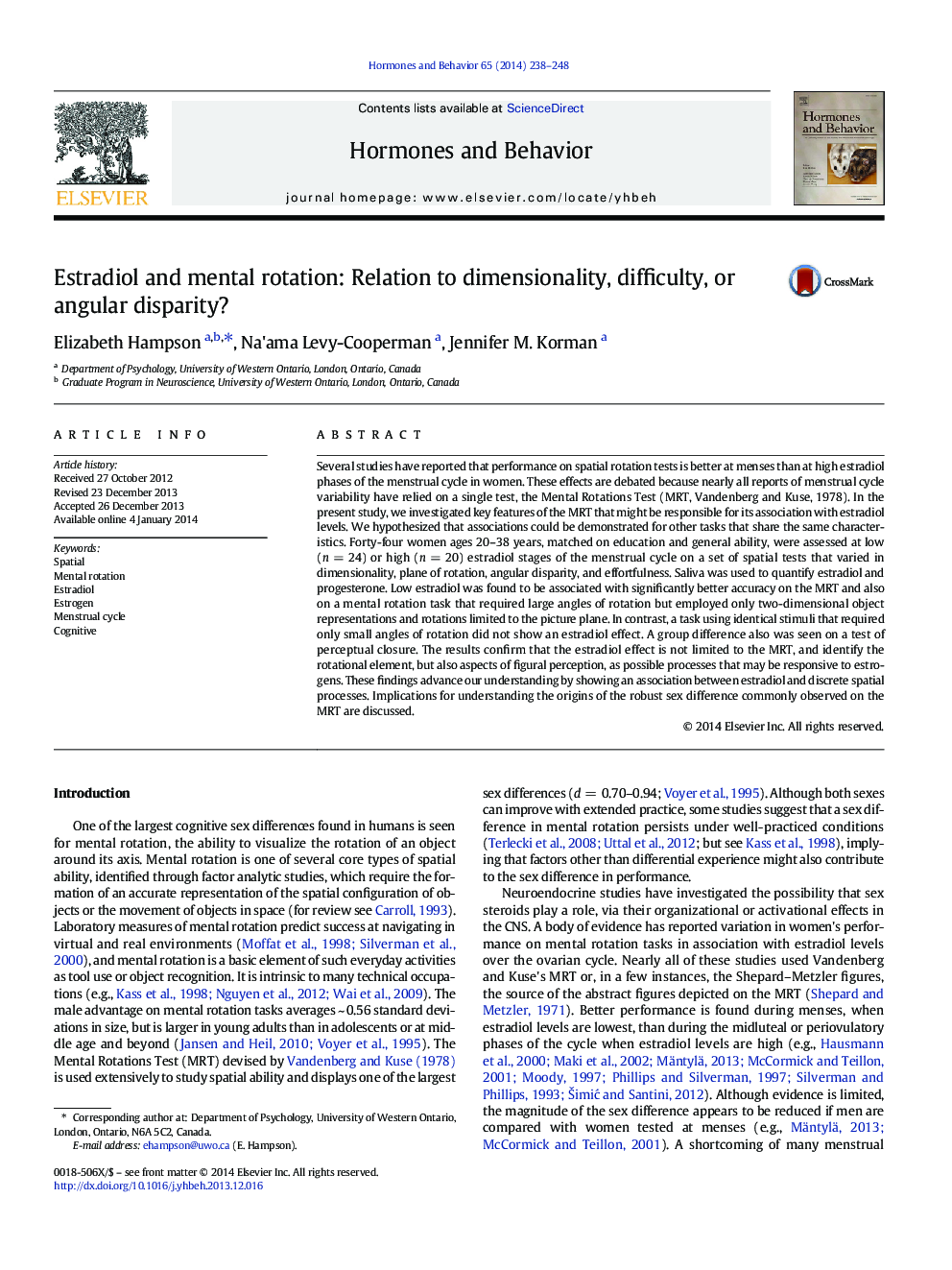| کد مقاله | کد نشریه | سال انتشار | مقاله انگلیسی | نسخه تمام متن |
|---|---|---|---|---|
| 323082 | 540488 | 2014 | 11 صفحه PDF | دانلود رایگان |
• Mental rotation assessed in women at high or low levels of circulating estradiol
• Greater accuracy seen at low estradiol but only if large angle rotations required
• Two- and three-dimensional rotation both better when estradiol is low
• Results show angular disparity but not dimensionality is important determinant of effect.
• Parietal cortex implicated as a possible site of estradiol action
Several studies have reported that performance on spatial rotation tests is better at menses than at high estradiol phases of the menstrual cycle in women. These effects are debated because nearly all reports of menstrual cycle variability have relied on a single test, the Mental Rotations Test (MRT, Vandenberg and Kuse, 1978). In the present study, we investigated key features of the MRT that might be responsible for its association with estradiol levels. We hypothesized that associations could be demonstrated for other tasks that share the same characteristics. Forty-four women ages 20–38 years, matched on education and general ability, were assessed at low (n = 24) or high (n = 20) estradiol stages of the menstrual cycle on a set of spatial tests that varied in dimensionality, plane of rotation, angular disparity, and effortfulness. Saliva was used to quantify estradiol and progesterone. Low estradiol was found to be associated with significantly better accuracy on the MRT and also on a mental rotation task that required large angles of rotation but employed only two-dimensional object representations and rotations limited to the picture plane. In contrast, a task using identical stimuli that required only small angles of rotation did not show an estradiol effect. A group difference also was seen on a test of perceptual closure. The results confirm that the estradiol effect is not limited to the MRT, and identify the rotational element, but also aspects of figural perception, as possible processes that may be responsive to estrogens. These findings advance our understanding by showing an association between estradiol and discrete spatial processes. Implications for understanding the origins of the robust sex difference commonly observed on the MRT are discussed.
Journal: Hormones and Behavior - Volume 65, Issue 3, March 2014, Pages 238–248
